LSD | DOORWAY
TO THE
NUMINOUS |
Dr. Stanislav Grofs LSD: Doorway to the Numinous is an extraordinary alchemical text that overturns many commonly held beliefs about the nature of individual identity and consciousness. Based on his 2,500 clinical sessions using LSD as a therapeutic tool before the substance was interdicted, Grofs book explores the vast dimensions of inner experience that have been ignored and marginalized by the mainstream. He also provides a theoretical framework for understanding these amazing experiences that synthesizes Freudian and Jungian insights into the dark matter of the unconscious and the primal drives that secretly impel us to act. A must-read for all serious students of consciousness.
D ANIEL P INCHBECK , AUTHOR OF 2012: T HE R ETURN OF
Q UETZ ALCOATL AND B REAKING O PEN THE H EAD
The most significant development in the recent history of depth psychology, and the most important advance in the field since Freud and Jung themselves, has been the work of Stanislav Grof.
R ICHARD T ARNAS , P H .D., AUTHOR OF
T HE P ASSION OF THE W ESTERN M IND
A breakthrough work.
J EAN H OUSTON , P H .D., COAUTHOR OF
T HE V ARIETIES OF P SYCHEDELIC E XPERIENCE
I know of no work that so well incorporates the findings of Freud, Jung, and Rank, adding fresh insights that the methods of these psychotherapists could never have achieved. It certainly goes beyond Freud. It brings new clarification to Jung. It throws new light on the topic of death and resurrection symbolism, as well as on religious imagery. I do not doubt that others working in this field will find Dr. Grofs discoveries a basis for a whole new strategy of research.
J OSEPH C AMPBELL, AUTHOR OF T HE H ERO WITH A T HOUSAND
F ACES , T HE M ASKS OF G OD , AND M YTHS TO L IVE B Y
Stanislav Grofs research is the most important contribution to personality theory in several decades.
A BRAHAM M ASLOW , P H .D., PSYCHOLOGIST, COFOUNDER OF
H UMANISTIC AND T RANSPERSONAL P SYCHOLOGY, AND
AUTHOR OF R ELIGIONS , V ALUES, AND P EAK E XPERIENCES
An exceptionally clear and readable introduction to the evolving psychology of the spirittranspersonal psychologythat is one of the most exciting developments of our times. Grof is far and away one of the leading scientists exploring this field.
C HARLES T ART , P H .D., PSYCHOLOGIST AND AUTHOR OF
S TATES OF C ONSCIOUSNESS , PSI: S CIENTIFIC S TUDIES
OF THE P SYCHIC R EALM , AND L IVING THE M INDFUL L IFE
Dr. Grofs studies of the mystical experience in LSD therapy represent an extremely valuable scientific approach to consciousness research from which many people can benefit.
C HOGYAM T RUNGPA R INPOCHE , T IBETAN LAMA AND
AUTHOR OF B ORN IN T IBET , S PIRITUAL M ATERIALISM ,
AND M EDITATION IN A CTION
Grof has had far and away more experience in psychedelic research than anyone else and has come up with the most comprehensive and helpful framework for interpreting the data in this bewildering area.
H USTON S MITH , P H .D., AUTHOR OF T HE W ORLDS R ELIGIONS
AND B EYOND THE P OST -M ODERN M IND
Grof marshals an impressive array of data and speculation in support of the timely demand that Western science acknowledge consciousness and its many nonordinary states.
R ICHARD A LPERT (R AM D ASS ), P H .D., PSYCHOLOGIST,
SPIRITUAL TEACHER, AND AUTHOR OF B E H ERE N OW ,
G RIST FOR THE M ILL , AND T HE O NLY D ANCE T HERE I S
A fascinating journey through previously uncharted realms of the psyche guided by one of the worlds foremost consciousness researchers. A remarkable account of the extraordinary depths of the human psyche.
F RANCES V AUGHAN , P H .D., PSYCHOLOGIST AND AUTHOR OF
A WAKENING I NTUITION AND T HE I NWARD A RC
To my brother, Paul, and my parents
A CKNOWLEDGMENTS
I would like to use this opportunity to express my deep gratitude to at least some of the many preceptors and friends to whom I owe thanks for invaluable help or guidance during various stages of the research work that has resulted in the publication of this book. I first became acquainted with LSD in 1955 in the department of Dr. George Roub ek, former Associate Professor of the Department of Psychiatry, Charles University School of Medicine in Prague; it was Dr. Roub
ek, former Associate Professor of the Department of Psychiatry, Charles University School of Medicine in Prague; it was Dr. Roub ek who introduced this compound into Czechoslovak psychiatry. During the last two years of my medical studies, when I was working as a volunteer in the faculty psychiatric hospital, I had the opportunity of observing and interviewing some of the LSD subjects in Dr. Roub
ek who introduced this compound into Czechoslovak psychiatry. During the last two years of my medical studies, when I was working as a volunteer in the faculty psychiatric hospital, I had the opportunity of observing and interviewing some of the LSD subjects in Dr. Roub eks pioneering experiments. In his department and under his auspices, I had, in 1956, my own first LSD session; this experience deepened and intensified my already existing interest in psychedelic drugs to the extent that it has become my lifes work. I often remember with much appreciation the gentle presence of my brother, Paul, who was at the time a medical student and offered to take care of me during this memorable session.
eks pioneering experiments. In his department and under his auspices, I had, in 1956, my own first LSD session; this experience deepened and intensified my already existing interest in psychedelic drugs to the extent that it has become my lifes work. I often remember with much appreciation the gentle presence of my brother, Paul, who was at the time a medical student and offered to take care of me during this memorable session.
During the early years of my research, I received inestimable help from Dr. Milo Vojt
Vojt chovsk; at that time, he headed the interdisciplinary team in which I began my LSD explorations, focusing on the relationship between the effects of various psychedelic drugs and the symptomatology of schizophrenia. After several years of exciting and fruitful cooperation with his research group, I shifted my interest from the model psychosis approach to diagnostic and therapeutic experimentation with psychedelics. Although our professional cooperation had been relatively short-lived, our personal friendship continued far beyond the point of our intellectual parting. I remember with gratitude and appreciation the basic training in scientific thinking and methodology that I received during this period.
chovsk; at that time, he headed the interdisciplinary team in which I began my LSD explorations, focusing on the relationship between the effects of various psychedelic drugs and the symptomatology of schizophrenia. After several years of exciting and fruitful cooperation with his research group, I shifted my interest from the model psychosis approach to diagnostic and therapeutic experimentation with psychedelics. Although our professional cooperation had been relatively short-lived, our personal friendship continued far beyond the point of our intellectual parting. I remember with gratitude and appreciation the basic training in scientific thinking and methodology that I received during this period.
In this context, I am particularly indebted to Dr. Lubomr Hanzl ek, Director of the Psychiatric Research Institute in Prague, where I carried out most of the research on which this book is based. The LSD study could not have been conducted and completed without his unusual open-mindedness, understanding, and support during the years of my unconventional explorations of this new scientific frontier. I also wish to thank in this connection my two former colleagues from the same institute, Dr. Julia Sobotkiewicz and Dr. Zden
ek, Director of the Psychiatric Research Institute in Prague, where I carried out most of the research on which this book is based. The LSD study could not have been conducted and completed without his unusual open-mindedness, understanding, and support during the years of my unconventional explorations of this new scientific frontier. I also wish to thank in this connection my two former colleagues from the same institute, Dr. Julia Sobotkiewicz and Dr. Zden k Dytrych, both of whom participated in the LSD research in Prague of which I was the principal investigator.
k Dytrych, both of whom participated in the LSD research in Prague of which I was the principal investigator.
In our everyday discussions, these two kindly shared with me the experiences from the LSD sessions of their patients and made their records readily available for my studies. Although partially based on their clinical material, the theoretical concepts described in this book have been developed independently of the concepts and approaches of these two colleagues; the ideas expressed in this volume are entirely my responsibility. I owe words of gratitude to Dr. Thomas Dostl, whose understanding, encouragement, and friendly help were essential at a time when I was exploring uncharted territories of the human mind in relative isolation from most of my professional colleagues.


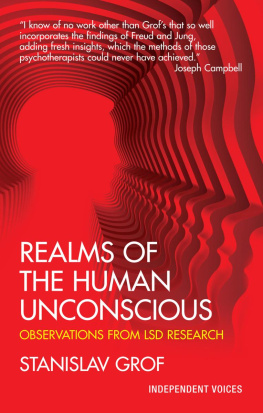
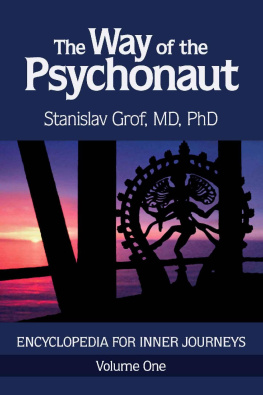
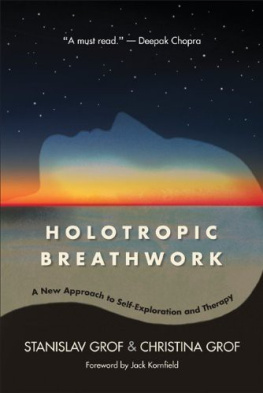
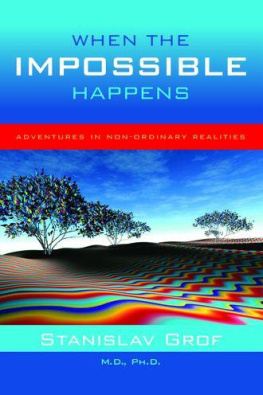
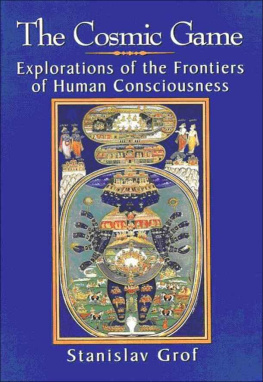


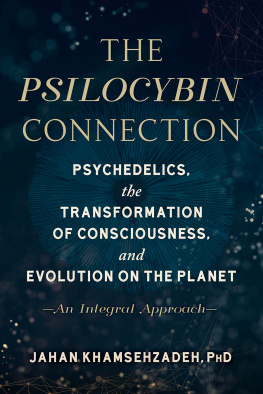


 ek, former Associate Professor of the Department of Psychiatry, Charles University School of Medicine in Prague; it was Dr. Roub
ek, former Associate Professor of the Department of Psychiatry, Charles University School of Medicine in Prague; it was Dr. Roub Vojt
Vojt chovsk; at that time, he headed the interdisciplinary team in which I began my LSD explorations, focusing on the relationship between the effects of various psychedelic drugs and the symptomatology of schizophrenia. After several years of exciting and fruitful cooperation with his research group, I shifted my interest from the model psychosis approach to diagnostic and therapeutic experimentation with psychedelics. Although our professional cooperation had been relatively short-lived, our personal friendship continued far beyond the point of our intellectual parting. I remember with gratitude and appreciation the basic training in scientific thinking and methodology that I received during this period.
chovsk; at that time, he headed the interdisciplinary team in which I began my LSD explorations, focusing on the relationship between the effects of various psychedelic drugs and the symptomatology of schizophrenia. After several years of exciting and fruitful cooperation with his research group, I shifted my interest from the model psychosis approach to diagnostic and therapeutic experimentation with psychedelics. Although our professional cooperation had been relatively short-lived, our personal friendship continued far beyond the point of our intellectual parting. I remember with gratitude and appreciation the basic training in scientific thinking and methodology that I received during this period. k Dytrych, both of whom participated in the LSD research in Prague of which I was the principal investigator.
k Dytrych, both of whom participated in the LSD research in Prague of which I was the principal investigator.